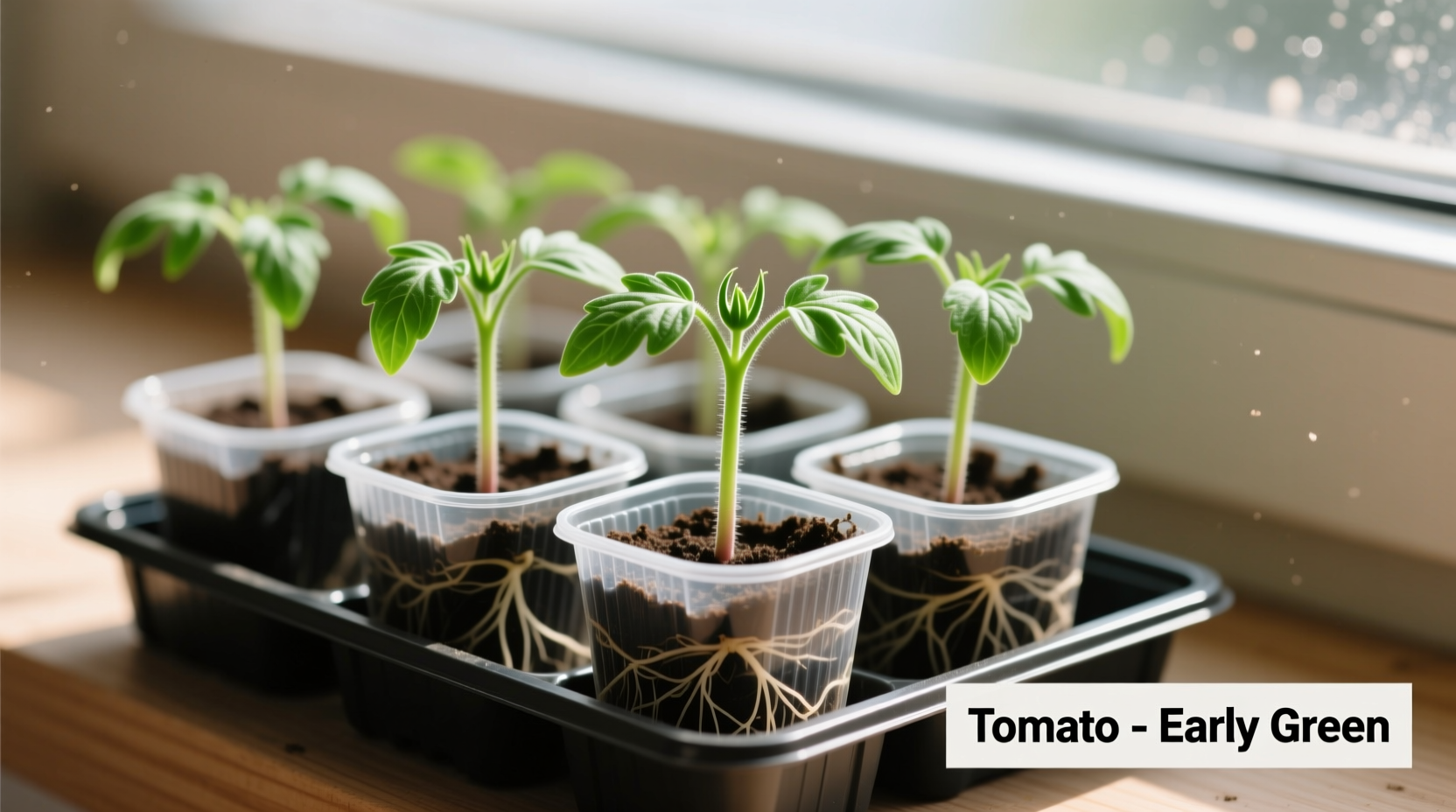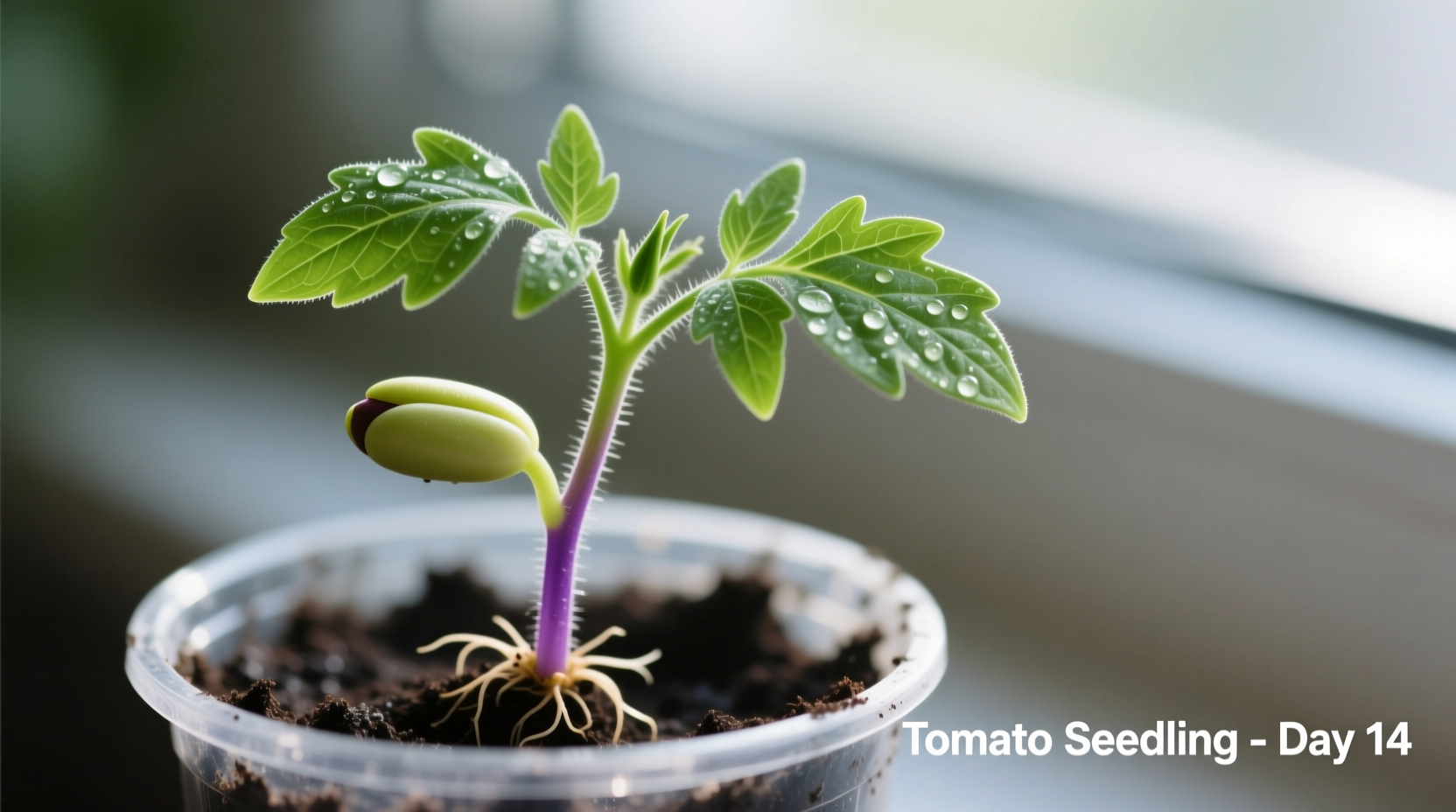Starting your tomato garden begins with understanding what these delicate seedlings need during their critical early growth phase. Whether you're a first-time gardener or refining your technique, getting the seedling stage right sets the foundation for a bountiful harvest. This guide delivers actionable, science-backed practices that address common challenges gardeners face when nurturing tomato seedlings from sprout to transplant.
Essential Conditions for Thriving Tomato Seedlings
Tomato seedlings require specific environmental conditions to develop strong root systems and healthy foliage. Unlike mature plants, seedlings have different needs that must be carefully managed during their first 4-6 weeks.
| Factor | Optimal Range | Consequences of Deviation |
|---|---|---|
| Light Exposure | 14-16 hours daily | Less than 12 hours causes leggy, weak growth |
| Soil Temperature | 70-80°F (21-27°C) | Below 60°F stunts root development |
| Air Temperature | Day: 70-80°F Night: 60-65°F |
Night temps above 75°F reduce flower formation later |
| Soil Moisture | Consistently moist, not soggy | Overwatering causes damping-off disease |
Step-by-Step Seedling Development Timeline
Understanding the progression of tomato seedling growth helps you provide appropriate care at each critical stage. This timeline reflects research from the University of California Agriculture and Natural Resources garden extension program.
- Days 1-7 (Germination): Maintain consistent moisture and temperatures around 75°F. Seedlings emerge with cotyledons (first leaves).
- Weeks 2-3 (True Leaf Development): First true leaves appear. Begin fertilizing with quarter-strength solution. Provide strong light source.
- Weeks 4-5 (Vegetative Growth): Seedlings develop 3-4 sets of true leaves. Begin hardening off process if outdoor planting approaches.
- Week 6 (Transplant Readiness): Seedlings should be 6-8 inches tall with sturdy stems. Complete hardening off before final transplant.
Watering Techniques That Prevent Common Problems
Improper watering causes more seedling deaths than any other factor. The Cornell University Gardeners extension service identifies these effective techniques:
- Bottom watering method: Place containers in shallow water tray for 15-20 minutes, allowing soil to absorb moisture upward
- Morning watering schedule: Water early to allow foliage to dry before evening
- Moisture check protocol: Insert finger 1 inch into soil; water only when top layer feels dry
- Avoid overhead watering for indoor seedlings to prevent fungal diseases

Troubleshooting Common Seedling Issues
Recognizing problems early prevents irreversible damage to your young plants. These solutions come from verified practices documented by agricultural extension services.
Leggy or Elongated Seedlings
Cause: Insufficient light intensity or duration
Solution: Provide supplemental lighting (14-16 hours daily) or move to brighter location. Bury elongated stems deeper when transplanting.
Yellowing Lower Leaves
Cause: Nitrogen deficiency or overwatering
Solution: Begin balanced fertilizer regimen at quarter strength. Check drainage and reduce watering frequency.
Damping Off Disease
Cause: Fungal pathogens in cool, moist conditions
Solution: Improve air circulation, avoid overcrowding, use sterile seed starting mix. University studies show cinnamon application can inhibit fungal growth.
Advanced Techniques for Maximum Transplant Success
Professional growers use these evidence-based methods to ensure seedlings transition successfully to outdoor conditions.
Proper Hardening Off Process
The hardening off process must be gradual to prevent transplant shock. Research from Oregon State University extension program demonstrates:
- Start with 1-2 hours of filtered sunlight on day 1
- Increase exposure by 1-2 hours daily
- Expose to gentle wind by placing in sheltered area
- Complete process over 7-10 days before final transplant
Fertilization Strategy for Strong Roots
Begin fertilizing when seedlings develop their first true leaves. Use a balanced formula (10-10-10) at quarter strength twice weekly. Increase to half strength after 3-4 weeks. Avoid high-nitrogen formulas which promote excessive leaf growth at the expense of root development.
Optimal Transplant Timing Indicators
Don't transplant based solely on calendar dates. Look for these physical indicators that your seedlings are ready:
- Stem thickness comparable to pencil lead
- 6-8 true leaves present
- White roots visible at drainage holes
- No signs of flowering (indicates stress)
When Standard Practices Don't Apply: Context Boundaries
Certain growing conditions require modified approaches. Understanding these context boundaries prevents common mistakes:
- Indoor growing with artificial light: Seedlings need 14-16 hours of light, not just daylight hours
- Cool climate regions: Wait until soil temperature reaches 60°F at 6-inch depth before transplanting
- Container gardening: Requires more frequent watering and fertilization than garden beds
- Heirloom varieties: Often need longer germination periods and more careful temperature control than hybrids
Long-Term Benefits of Proper Seedling Care
Investing time in proper seedling care delivers significant returns throughout the growing season. Research shows that well-cared-for seedlings:
- Produce fruit 7-10 days earlier than stressed plants
- Yield 25-40% more tomatoes per plant
- Develop deeper root systems that access more nutrients
- Show increased resistance to common diseases
Frequently Asked Questions
When should I start tomato seeds indoors for my region?
Start seeds 6-8 weeks before your last expected frost date. Check your USDA hardiness zone for specific timing. Most gardeners begin seeds between mid-March and early April for May/June transplanting.
How deep should I plant tomato seedlings when transplanting?
Bury tomato seedlings deeper than their original container, up to the first set of true leaves. The buried stem will develop additional roots, creating a stronger root system. This technique works specifically for tomatoes, unlike most other vegetables.
Why are my tomato seedlings growing slowly?
Slow growth typically indicates insufficient light, cool temperatures, or nutrient deficiency. Ensure seedlings receive 14-16 hours of strong light daily, maintain soil temperatures above 65°F, and begin a mild fertilizer regimen once true leaves appear.
Can I grow tomatoes from store-bought tomato seeds?
While possible, store-bought tomatoes are often hybrid varieties that won't produce true-to-type plants. For reliable results, use seeds from heirloom tomatoes or purchase seeds specifically packaged for planting from reputable gardening suppliers.











 浙公网安备
33010002000092号
浙公网安备
33010002000092号 浙B2-20120091-4
浙B2-20120091-4